
It's easy to look back seven centuries and judge what was right and wrong.Benjamin Sisko
Human history was the history of the Human species from the planet Earth.
23rd century historian John Gill was known for his treatment of Earth history as causes and motivations rather than dates and events. (TOS: "Patterns of Force")
Origins
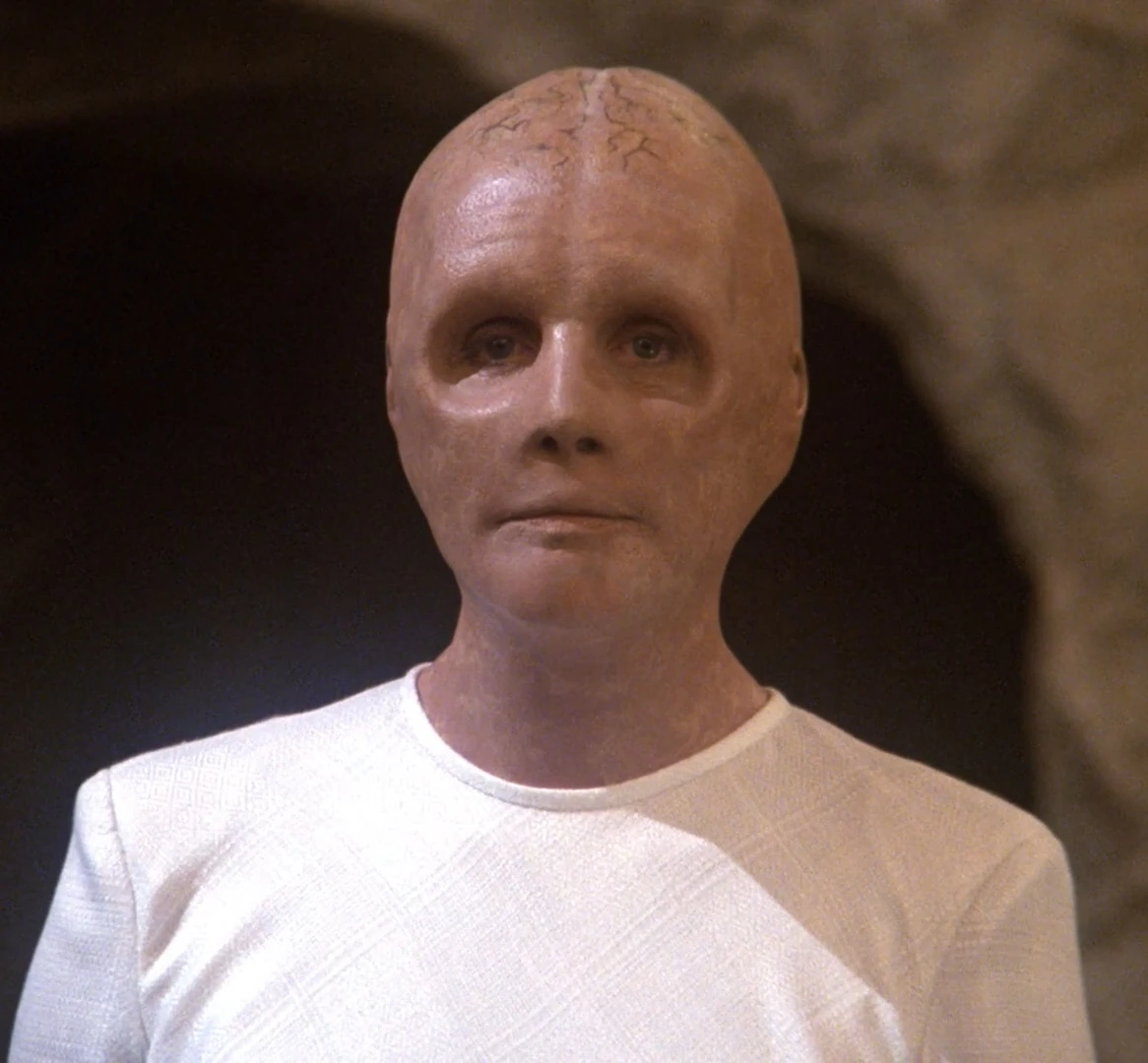
In 2369, newly-discovered evidence suggested many of the galaxy's humanoid races were descended from a single humanoid race, the originators of the basic anatomy. Around 4.5 billion years ago they had seeded many worlds with a DNA code to guide evolution to a form resembling their own. Humans displayed evidence of these DNA sequences. (TNG: "The Chase")
As life on Earth did not emerge until hundreds of millions of years later, those DNA sequences apparently laid dormant for this period.
According to Q, approximately 3.5 billion years ago, "give or take an eon or two," a group of amino acids combined to form the first proteins, in the region of Earth that eventually became known as France. This first life on the planet developed into, among other things, the Human species. (TNG: "All Good Things...")
According to current real-world science, there is evidence that suggests life took hold on Earth already between 3.8 and 4.1 billion years ago [1] and flourished in the oceans by at least 3.7 billion years ago. [2] However, these findings postdate the shooting of "All Good Things...".

Approximately 290 million years ago, the semi-aquatic amphibian species Eryops lived on Earth. Eryops was probably the last link between the branches of life that evolved along separate paths into dinosaurs and mammals. The mammalian line resulted in Humans. (VOY: "Distant Origin")
One religious account for the creation of Humans featured the first two members of the species, Adam and Eve, being created by God. In 2268, Sargon said that the story of all Humans being descended from Adam and Eve may have been based on his own people having colonized Earth some 600,000 years prior. However, James T. Kirk replied that 23rd century science indicated life had evolved independently on Earth (a conclusion later bolstered by Q). Spock speculated that Sargon's people might have, instead, colonized Vulcan rather than Earth. (TOS: "Return to Tomorrow"; TNG: "All Good Things...")
Pre-history

Humans had started to form tribal societies as of 100,000 years ago, when one such tribe, the /Xam Abathwa of Africa, gathered to share a story about a girl who created the milky way. In one later told version of the story, the girl belonged to a group of primitive farmers afraid of the night, until the girl encountered an alien. (DIS: "Brother"; ST: "The Girl Who Made the Stars")
Approximately thirty-five thousand years ago, multiple species of humanoids co-existed on Earth, two of which were modern Humans and Neanderthals. However, the Neanderthals became extinct around 28,000 years ago, which turned out to be fortunate for modern Humans. (ENT: "Dear Doctor")
In the final draft script of "Dear Doctor", the time period in which modern Humans and Neanderthals co-existed was referred to as "fifty thousand years" prior to the 22nd century. The final version of that episode, though, refers to it "thirty-five thousand years" beforehand.
Pre-warp history
A member of Species 8472 said of Humans in 2375, "At first glance they're so primitive. Genetic impurities, no telepathy, violent. And yet they've created so many beautiful ways to convey their ideas: literature, art, music." (VOY: "In the Flesh")
Ancient history
Some of Earth's first civilizations arose in the eastern Mediterranean region and adjacent Mesopotamia, including the Greeks, the Egyptians, as well as the city of Uruk, which was ruled by king Gilgamesh in the 3rd millennium BC. (TOS: "Court Martial", "Requiem for Methuselah"; TNG: "Darmok")

The Greek civilization arose from a tribal society in approximately 2700 BC and would form the basis of much of Earth's culture and philosophy. Influential philosophers included Socrates as well as Plato, and the Greek civilization was seen as the beginnings of a "Golden Age" by Captain James T. Kirk in the 23rd century. (TOS: "Who Mourns for Adonais?", "Plato's Stepchildren"; VOY: "Darkling")
The Greeks also brought forth notable warriors, such as Alexander the Great and Spartan King Leonidas. The latter defended a mountain pass with only a small band of Spartans against a vast Persian army at the Battle of Thermopylae in 480 BC. The Spartans put up a "heroic struggle" (according to Julian Bashir), until they were wiped out. (TOS: "Space Seed", "Who Mourns for Adonais?"; DS9: "What You Leave Behind")

The Egyptians constructed large pyramids as part of their accomplishments. Their Great Pyramid of Giza was the largest of the pyramids built in Egypt and was finished around 2600 BC. Its construction was observed by time-traveling anthropologists beginning in 2769. One of the most powerful Egyptian kings was Ramses, whose name would echo on for millennia. (ENT: "Cold Front"; TOS: "Patterns of Force")
The ancient Greek and Egyptian cultures existed during the Bronze Age. Another term often used for that period in Greek history is the classical age.
The Code of Hammurabi was an important historical legal document, but its dating to the 2nd millennium BC was never mentioned on screen.
Another early Human civilization was that of the Chinese, who under the first Qin emperor built the Great Wall of China during the 3rd century BC. (VOY: "11:59")

The ancient Roman Empire was one of the most influential powers in Human history. Roman Dictator Julius Caesar and Emperor Augustus Caesar were viewed by many, including Khan Noonien Singh, as having achieved great things for the Empire during their reigns. (TOS: "Space Seed") The Roman Empire was seen by Jean-Luc Picard to have begun its fall as a civilization when the Visigoths attacked the capital city of Rome during the reign of Emperor Flavius Honorius. (TNG: "The Best of Both Worlds")
Rome was an empire from the 1st century BC until until the 5th century (the sacking of Rome by the Visigoths happened in 410 AD). However, no date or time-frame with respect to Roman history has ever been stated on screen.
Following on the heels of Rome was a popular religion, Christianity, with a basic philosophy of, as Spock summarized it, "total love and total brotherhood." It arose in the ancient world beginning in the 1st century and followed the teachings of Jesus Christ. The religion considered Christ to be the son of God. (TOS: "Bread and Circuses")
Middle Ages and Modern Era

During the period known as the Middle Ages, a series of related military campaigns known as the Crusades – motivated by Christianity as well as political causes – took place during the 11th century through the 13th century. These wars gave Human history "character" according to Q. (DS9: "Q-Less")
While its timing was never mentioned on screen, parts of Earth experienced a so called "Dark age" during the early Middle Ages.
Half of Europe was killed by the bubonic plague circa 1334. Flint saw it that summer from Constantinople: "... It marched through the streets, the sewers. It left the city by ox cart, by sea, to kill half of Europe. The rats, rustling and squealing in the night as they, too, died." (TOS: "Requiem for Methuselah")
Beginning in 1478, the Spanish Inquisition was founded in Spain to suppress heresies against the Christian religion. The Inquisition was regarded by future Humans as a particularly brutal institution during the 24th century, but was regarded by Q as another historical event that provided "character" to Humanity and kept it from being boring. (Star Trek IV: The Voyage Home; DS9: "Q-Less")
By 1485, Earth had achieved a technological level equivalent to a "B" rating on the industrial scale used by 23rd century Starfleet. (TOS: "Spock's Brain")
The Renaissance was a period in Human history following the Middle Ages and before the Modern age. Petrarch was a Human author living at its beginnings and William Shakespeare lived during its final period. An important figure during this era was Leonardo da Vinci. (TNG: "Emergence"; VOY: "Concerning Flight")
In 1588, England defeated the Spanish Armada. (ENT: "Future Tense")

Although individuals like Johannes Kepler and Nicolaus Copernicus made lasting breakthroughs in science, another inquisition in the name of Christianity took place during the 17th century. The scientist Galileo Galilei publicly supported the idea that the Earth was not the center of the universe. He was tried and convicted of heresy in 1633 by an inquisition as a result, and many of his books were burned. Despite that, Isaac Newton soon made crucial observations concerning the law of gravity. (TNG: "Descent"; DS9: "In the Hands of the Prophets"; VOY: "Death Wish", "Future's End")
In North America, the Pueblo Revolt in 1680 was an uprising by American Indians against the colonizing Spanish in New Mexico. Though initially successful, the Spanish returned ten years later carrying out brutal reprisals against the native Pueblos. One of the participating Spanish soldiers was Javier Maribona-Picard. (TNG: "Journey's End")

Another conflict took place in the late 18th century, when George Washington helped win a war for his colonies' independence from Great Britain. This was generally known as the American Revolution and resulted in the establishment of the United States of America. In 2366 some, such as Beverly Crusher, considered Washington a military general; others, such as Kyril Finn, considered him a terrorist. (TNG: "The High Ground")
Commerce arose in the United States following the revolution, and throughout the 18th century and 19th century, ocean-going "Yankee Traders" sailed the oceans in search of mercantile opportunity. (TNG: "The Last Outpost")
In the late 18th century Napoléon Bonaparte rose to power in France and subsequently dominated much of Europe. The British Royal Navy, led by Admiral Horatio Nelson, defeated the combined French and Spanish fleet at the Battle of Trafalgar, though Nelson was killed in the battle. Napoleon was ultimately defeated at Waterloo in 1815. (TNG: "Hide And Q", "The Best of Both Worlds"; VOY: "The Thaw")
A part of the 19th century was called the Victorian era, named after British Queen Victoria. (VOY: "Blood Fever")
20th century
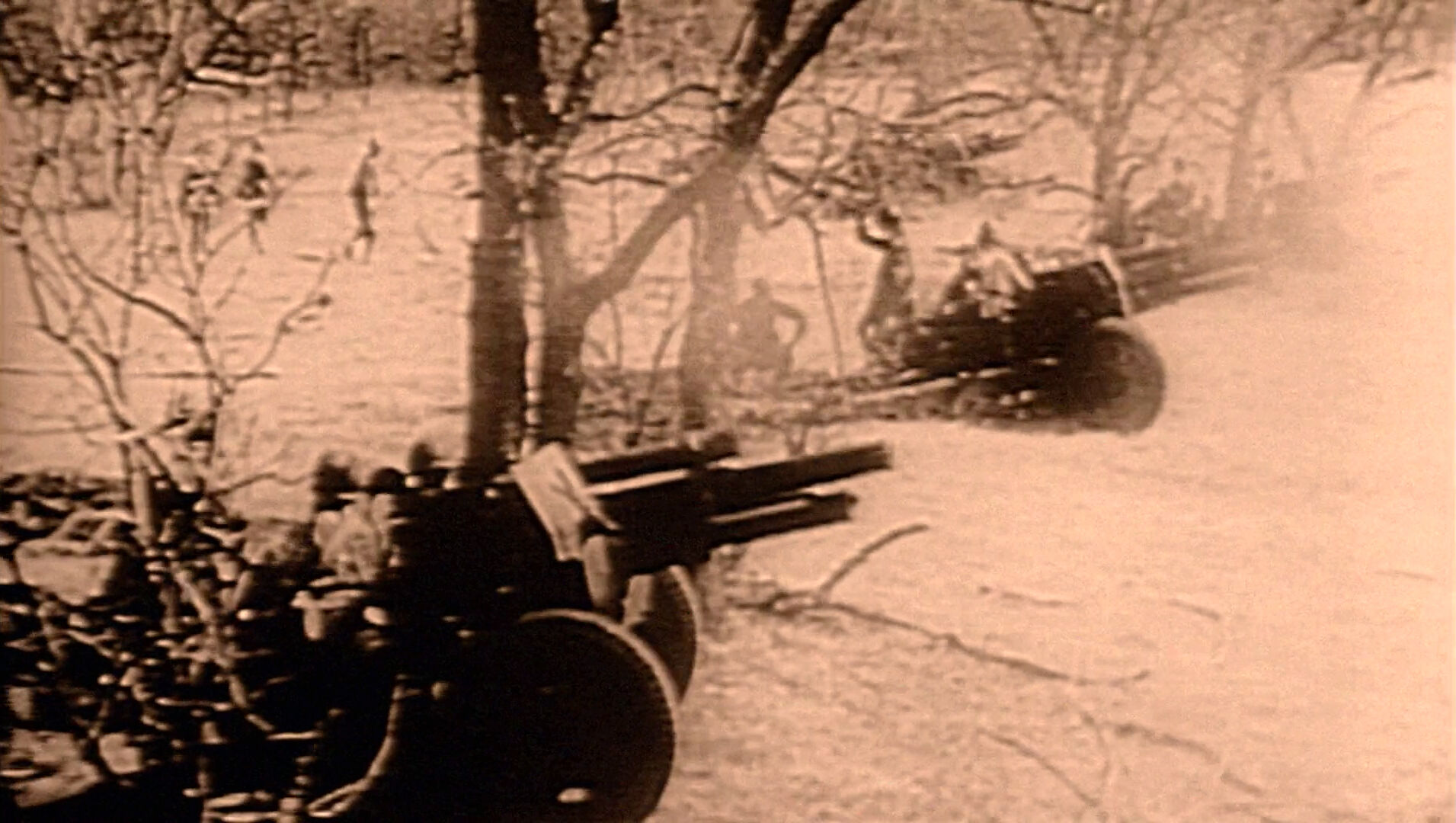
Human civilization experienced major wars that involved nearly every continent on Earth during the 20th and 21st centuries. The first two such wars – the first and second World Wars – saw six million and eleven million Humans die, respectively, from the effects of despotism alone. (TOS: "Bread and Circuses"; VOY: "In the Flesh")
In "Bread and Circuses", Spock gave casualty figures for each of World Wars I, II, and III. His figures are substantially off for total casualties that records show for the first and second world wars, even when all civilians are taken out of the equation. Only by assuming he was discussing deaths from despotism alone (reasonable in the context of his statement) do the numbers appear to match both data known in 1967 and later Trek statements on WWIII deaths.
Between the first two world wars, the United States suffered through a period known as Great Depression. (TOS: "The City on the Edge of Forever")

The Second World War was a conflict, in part, between the forces of fascism – epitomized by Germany's Adolf Hitler and his Nazi political party – and those who opposed such a form of government. (TOS: "The City on the Edge of Forever") Initially assuming an official position of neutrality, the United States fully entered the conflict after a Japanese attack at Pearl Harbor. (TNG: "The Enemy") Hitler and his allies were defeated, but left controversy in their wake. In the 23rd century, some, such as Spock, saw the Nazis as sadistic; some, such as Kirk saw them as "brutal, perverted" and that they "had to be destroyed at a terrible cost". Still others, such as John Gill, saw them governing over the "most efficient state... Earth ever knew", and believed that some of the Nazi approaches could prove beneficial to a society. Spock agreed with Gill, at least as to efficiency: "That tiny country – beaten, bankrupt, defeated, rose in a few years to stand only one step away from global domination." (TOS: "Patterns of Force"; VOY: "The Killing Game", "The Killing Game, Part II"; ENT: "Storm Front", "Storm Front, Part II")
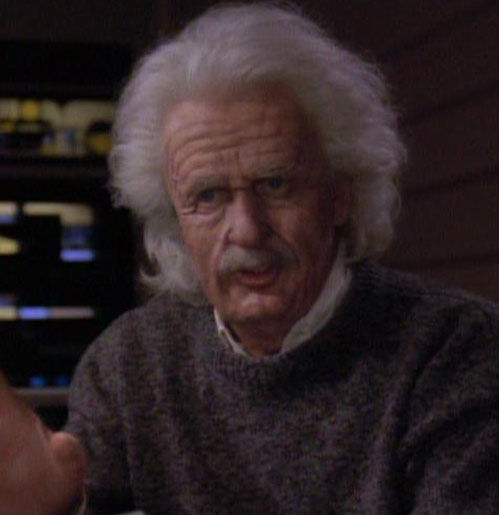
World War II, though devastating, assured the dominant role of the USA in the second half of the 20th century and its technological advancements, in fields like rocketry and nuclear fission, still resonated in the 24th century. Part of these technological and scientific developments were built on earlier achievements, e.g., by physicist Albert Einstein, who had already developed the Theory of General Relativity in 1915, or engineer Robert H. Goddard, who had successfully launched the first liquid propellant rocket in 1926. (TNG: "Manhunt", "Loud As A Whisper"; VOY: "The Omega Directive")
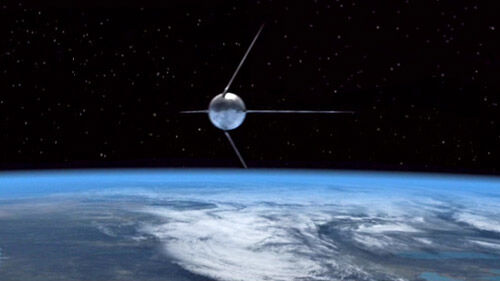
Scientific breakthroughs of the 20th century also enabled the beginnings of space exploration, marked by the Soviet Union launching the first artificial satellite, Sputnik 1, on October 4, 1957. This period in history is also referred to as the Atomic Age as it was accompanied by the rise of nuclear weaponry and the use of nuclear fission. The latter resulted in toxic side effects, but would not be replaced by fusion until the start of the fusion era. (ENT: "Carbon Creek"; Star Trek IV: The Voyage Home)
Multiple brush wars occurred on the Asian continent involving two great powers. (TOS: "A Private Little War")
It is possible that Kirk may have been referencing the Korean War and the Vietnam War, which both involved the United States and the Soviet Union.
1968, the year in which a malfunctioning orbital nuclear warhead platform nearly detonated, was viewed by 23rd century Humans as one of the most critical years on record. Then-current Earth crises "would fill a tape bank", according to Spock. Assassinations, government coups, wars in Asia, the communist/capitalist conflict, and orbiting hydrogen bombs were among the greatest problems facing Humanity at that time. (TOS: "Assignment: Earth", "A Private Little War", "The Omega Glory")

Despite the volatile situation, but also in part accelerated by it, Humanity first landed two men on Earth's moon and returned them safely to Earth in 1969. (VOY: "One Small Step", "Threshold"; ENT: "Carbon Creek")
"Assignment: Earth" predicted that in 1968 a government coup would take place in an Asian country. In the real 1968, a coup did occur in Asia, in the country of Iraq. That episode – broadcast in March 1968 – also predicted an "important" assassination for 1968. Dr. Martin Luther King was killed in April; Robert Kennedy in June. The Watergate break-in and cover-up of the 1970s was also mentioned by Q as being an event which gave Human history "character".
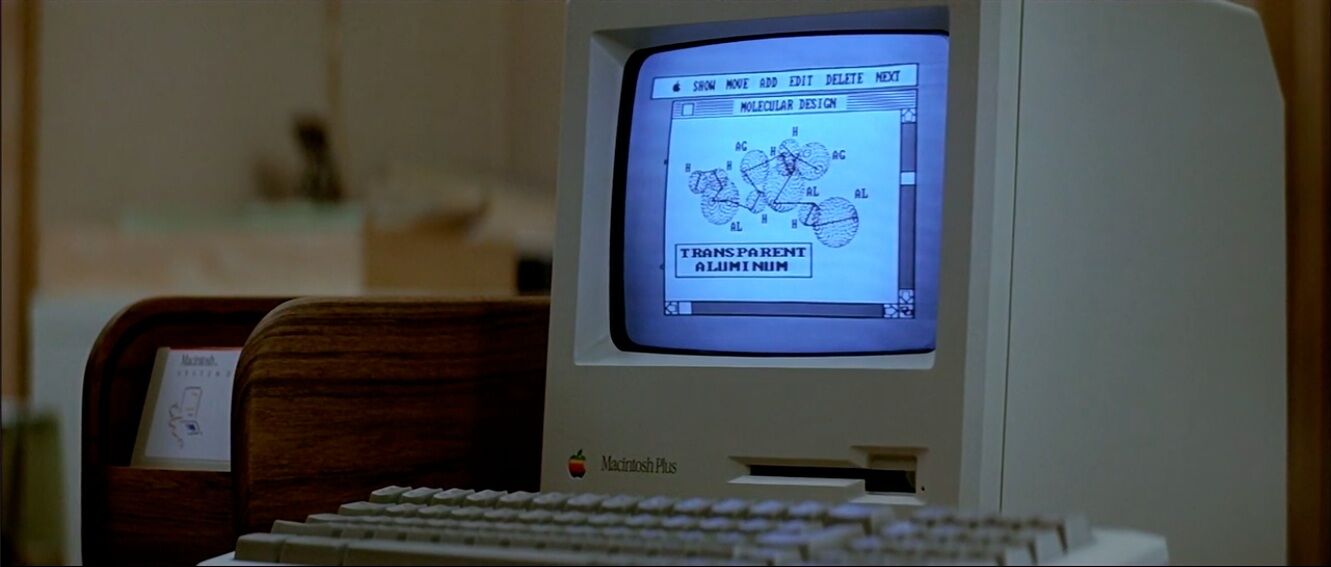
The 20th century was also when the computer age begun. Henry Starling introduced technological innovations in 1969, when he introduced the first isograted circuit and founded Chronowerx Industries, by reverse-engineering technology from the 29th century timeship future Aeon. By 1986, desktop computers had become capable of complex calculations, but still required input with keyboard and mouse. (Star Trek IV: The Voyage Home; VOY: "Future's End")
In 1991, the Soviet Union broke up, ending the period known as the Cold War. (DS9: "Our Man Bashir"; VOY: "Future's End")
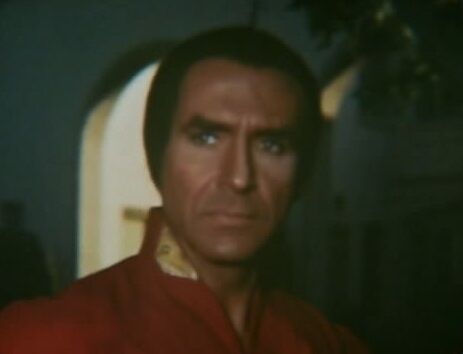
The 20th century also saw the start of genetic modifications to the Human genome and the creation of Humans (popularly known as Augments) made stronger, faster, and smarter by the hand of scientists. In 1993, a group of Augments seized power simultaneously in over forty nations and sparked the Eugenics Wars. The wars were particularly devastating, and during them civilization was on the verge of collapse in some parts of the world. At that time, Humans operated the DY-100-class, an early type of sleeper ship, which was used to transport the remaining Augments into space in 1996. (TOS: "Space Seed") The terrible experiences that Humanity had with genetic manipulation resulted in long lasting prohibitions against intentional "improvement" of the Human genome well into the 24th century. (DS9: "Doctor Bashir, I Presume")
21st century
In 2002, Humans sent one of its first interstellar probes, Nomad, to space. (TOS: "The Changeling") After advances in sublight propulsion rendered sleeper ships a thing of the past around 2018, manned and unmanned exploration of space further advanced. Colonel Shaun Geoffrey Christopher led the first successful mission to Saturn. (TOS: "Space Seed", "Tomorrow is Yesterday")
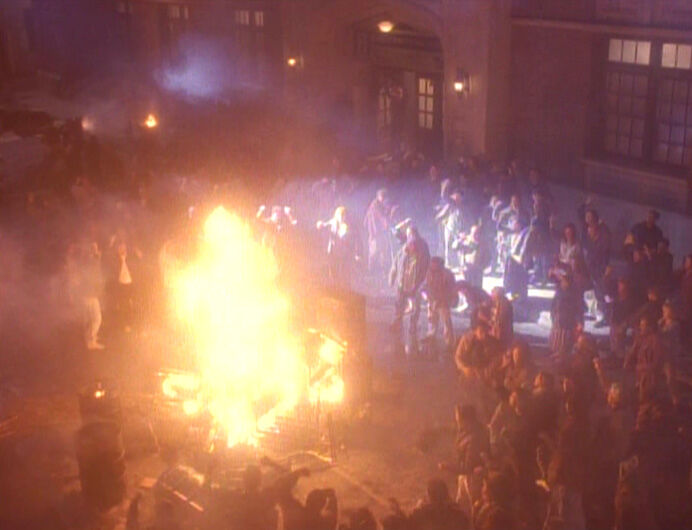
The United States suffered economic setbacks in the early 2000s. They were addressed circa 2020 by establishing Sanctuary Districts in major US cities. These walled districts were originally created to help America's massive homeless and jobless population. Instead, the districts became little more than prisons for the destitute and the mentally ill. In September 2024, mounting tensions in the Sanctuary Districts culminated in the Bell Riots. Political fallout from the riots resulted in the abolition of the districts and the United States finally began to face the serious social problems it had struggled with for over a century. (DS9: "Past Tense, Part I", "Past Tense, Part II")
Although Ireland eventually unified after over a century of terrorist violence in 2024, the year of the Bell Riots, that year saw a general deterioration of the international situation, including widespread civil unrest in France. A number of nations would soon join together in a union known as the Eastern Coalition. Hostilities between the Eastern Coalition and forces including the United States broke out in 2026 as World War III over the issue of genetic engineering and Human genome enhancement. The conflict later escalated into a full-blown nuclear holocaust, engulfing much of the globe and nearly returning Human civilization to a dark age. Six hundred million people died across the planet as a result. Although the United Nations had been reorganized as the New United Nations by 2036, the subsequent collapse of the global economy, political systems, and the drastic environmental effects of the war devastated those nations which had escaped direct nuclear attack. (TNG: "Encounter at Farpoint", "The High Ground"; Star Trek: First Contact; VOY: "In the Flesh"; ENT: "In a Mirror, Darkly, Part II" production art; DIS: "New Eden")

Around this same time Humanity was still making efforts to explore space. In 2032, a successful manned mission to Mars, Ares IV, took place in the midst of world war. Although the command module was lost in a graviton ellipse, this mission was considered by some as a precursor for Humankind's further exploration of space. (VOY: "One Small Step") In 2037, the Charybdis was launched by the United States in a third attempt to take Humans beyond the Sol system. Unknown at the time, that ship was swept off course by an unknown alien force and finally reached the Theta 116 solar system. (TNG: "The Royale")
Although the drive might have been more advanced, the Ares IV appears to have been in some ways a more primitive ship than the 1996 DY-100 in which Khan escaped Earth. Artificial gravity, at a minimum, seems to have not been included. This could be due to many factors, including economic downturns, the existence of World War III, and key scientific capabilities being lost or unavailable after the Eugenics Wars.

Major hostilities of World War III ended with a ceasefire in 2053, but with most of the major governments collapsed, the recuperation process was slow and uneven. Colonel Phillip Green continued to spread his inhumane propaganda as late as 2056, calling for the euthanizing of radiation-damaged war victims. The New United Nations had collapsed and law and order soon degraded into a "guilty-until-proven-innocent", lawyer-free show trial system which lasted at least until 2079 in some parts of the world, later dubbed the post-atomic horror. (ENT: "Terra Prime"; Star Trek: First Contact; TNG: "Encounter at Farpoint", "All Good Things...")
The period from the 19th to the late 21st centuries also saw dramatic environmental degradation due to Human activities. Humans were responsible for the extinction of many species, including the draco lizard, the white rhinoceros, the buffalo, and the humpback whale (the latter of which were eventually proved to be sentient and were brought back from extinction by James Kirk). Human industrial activities also resulted in massive air pollution and degradation of Earth's ozone layer. The nuclear wars led to several "nuclear winters" as well as radiation poisoning of both Humans and animals. (TOS: "The Man Trap"; Star Trek IV: The Voyage Home; TNG: "When The Bough Breaks", "New Ground")
From First Contact to the Federation
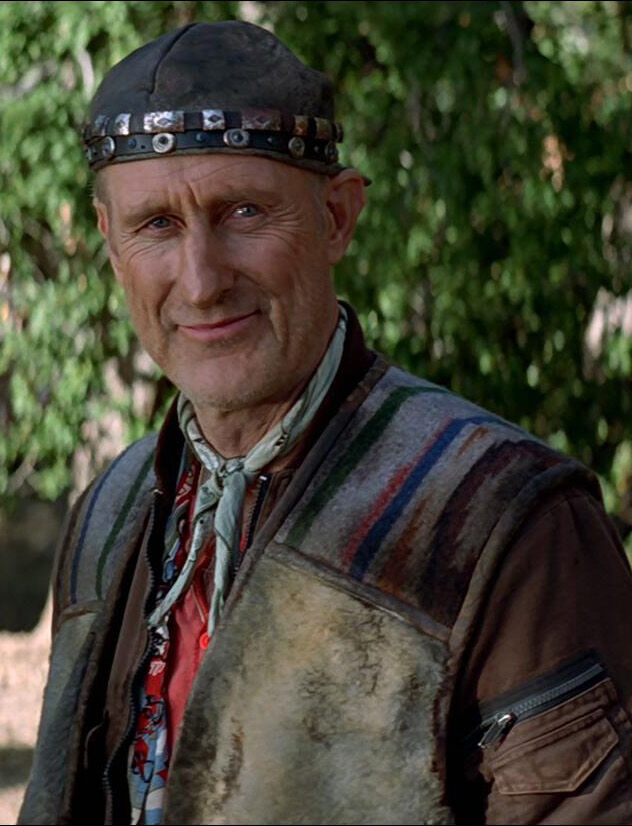
After the last global conflict, Dr. Zefram Cochrane made mankind's first faster-than-light spaceflight in 2063. This drew the attention of the Vulcans and thereby resulted in the first formal post-warp contact with an interstellar civilization. This affected Humanity in a profound way and would initiate several long-lasting changes over the coming decades. (Star Trek: First Contact)
Following first contact, Humanity rebuilt its world from the ashes of the devastating nuclear conflict; most forms of poverty and disease were eradicated from the planet within the next fifty years. However, those still were very difficult fifty years and global recovery was uneven: in the late 2070s, some areas of the planet remained in a state of near-anarchy; and from a 24th-century perspective, Earth was still seen as recovering from World War III well into the early 22nd century; Jean-Luc Picard called the era "chaotic." (Star Trek: First Contact; TNG: "Up The Long Ladder", "Encounter at Farpoint"; ENT: "Broken Bow")

Parallel to developments on Earth, mankind's newly gained warp-capability was immediately put to use and several crewed as well as uncrewed missions of exploration and colonization were launched, such as the SS Valiant in 2065, Friendship 1 in 2067, the SS Conestoga in 2069, and a ship to colonize Terra 10 around 2069. (ENT: "Terra Nova"; TOS: "Where No Man Has Gone Before"; TAS: "The Terratin Incident"; VOY: "Friendship One") New Berlin on the moon was established prior to 2069, and the first Human colony on Mars was formally incorporated in 2103. (ENT: "Terra Nova"; VOY: "The 37's", "Lifesigns")
During the latter half of the 21st century, Humanity fought four wars against an alien race known as the Kzinti. The conflict ended with the Treaty of Sirius and the victory of Earth. The Kzinti were forced to enact a complete demilitarization, with only a small police force permitted, and to allow complete and unrestricted access to their territory. (TAS: "The Slaver Weapon")
During the early 22nd century, Liam Dieghan founded the Neo-Transcendentalist movement, advocating "a simpler life in which one lived in harmony with nature." (TNG: "Up The Long Ladder")
As one of the first steps toward a unified Earth government, the European Hegemony, a somewhat loose alliance in the European region on Earth, formed. (TNG: "Up The Long Ladder") By 2150, all of Earth's former nations had joined the United Earth government. (TNG: "Attached")
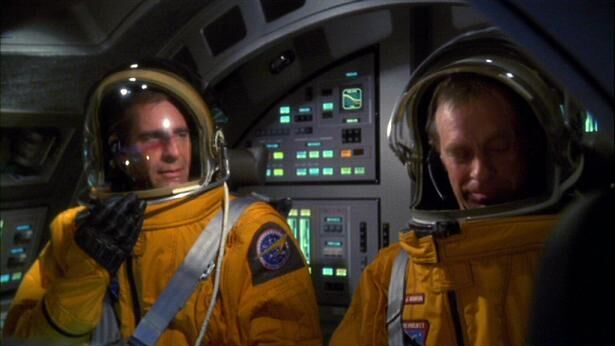
Following first contact with the Vulcans, work on improving the warp drive continued, leading to the establishment of the Warp Five Complex in 2119. The following decades saw the founding of Starfleet and its NX Project, resulting in various breakthroughs in the 2140s. (ENT: "Broken Bow", "First Flight")
Humans had established several colonies outside the Sol system by the early 2150s, including Vega colony, Alpha Centauri, and Proxima colony. However, while Starfleet maintained several vessels, Human presence in outer space and contact between those planets was mainly provided by the Earth Cargo Service. (ENT: "Fortunate Son", "Twilight", "Borderland")
Brannon Braga once commented that, by 2151, Humans had "met some other aliens [than the Vulcans], courtesy of the Vulcans, but we've never bolted out [into space] on our own." (Broken Bow, paperback ed., p. 250)
In 2151, Humanity's first starship capable of warp 5 was launched: Enterprise NX-01. It was the first of a line of ships that, from a design and organizational point of view, evolved into the ships used by Starfleet into the 24th century and beyond.

Enterprise had a distinguished service career, and ultimately even thwarted the Xindi plan to eradicate Humanity. In the 22nd century, the Sphere-Builders informed the Xindi that they would be the victims of a genocidal attack from Humans in the 26th century, and should act preemptively to eliminate the threat. This was a fabrication on the part of the Sphere-Builders to use the Xindi to their own advantage. (ENT: "Azati Prime") The Xindi Council went along with the advice, tested a prototype weapon on Earth in 2153 (resulting in the deaths of nearly seven million Humans), and intended to use a more powerful weapon to destroy the entire planet. (ENT: "The Expanse") This crisis became the most threatening event to Humans as a species since World War III. Enterprise, under the command of Captain Jonathan Archer, was able to both severely damage the Sphere-Builders' technology systems and convince the Xindi that Humans were not their enemy. (ENT: "Zero Hour")
An ultimately omitted line of dialogue from ENT: "The Xindi" featured Jonathan Archer reminding Malcolm Reed, "Humanity's in trouble, Malcolm." That line was in the final draft script of "The Xindi" as of 17 June 2003 but had been excised by 10 September of that year.
After the Xindi crisis, Humanity continued to develop relations with its interstellar neighbors. Faced with the increasingly aggressive Romulan Star Empire during the Babel Crisis of 2154, Humans joined into an ad-hoc alliance with Vulcans, Andorians, and Tellarites. This temporary construct eventually led to a conference on Earth the following year, during which several species discussed the formation of a Coalition of Planets. While a xenophobic Human faction, Terra Prime, tried to derail the conference and eject all non-Humans from the Sol system, their efforts ultimately failed and the talks went ahead. (ENT: "United", "Terra Prime", "Demons")

In 2156, the tensions that already existed between Earth and the Romulans escalated into a full-scale interstellar war. The Earth-Romulan War was a major conflict, with military and political ramifications felt for over two centuries. Earth, – and its Andorian, Tellarite, and Vulcan allies – and the Star Empire finally ended the violence after the Battle of Cheron and established a neutral zone as a buffer between their two spheres of influence. The Romulan Neutral Zone lasted well into the 24th century. (TOS: "Balance of Terror"; TNG: "The Defector")
Humanity and the Federation
- See also: Federation history

After the Earth-Romulan War, Humanity and its three wartime allies joined together in a new entity, the United Federation of Planets, founded in 2161. (ENT: "Zero Hour"; TNG: "The Outcast")
After the founding of the Federation, Humanity's history and that of the Federation were closely intertwined. The United Earth Starfleet grew into the military and exploratory arm of the Federation known as simply "Starfleet" by the 23rd century. The Human homeworld Earth became the location of the key Federation institutions: The Federation president's office was located in the city of Paris, and both the Federation Council and Starfleet Command were meeting in San Francisco. (Star Trek: The Motion Picture; Star Trek IV: The Voyage Home; Star Trek VI: The Undiscovered Country)
Political crises and conflicts that involved the Federation drew Humanity in, and vice versa. Human involvement in Federation matters in the 23rd century was so extensive that it prompted future Klingon chancellor Azetbur to claim in 2293 that the Federation was little more than "a 'homo sapiens' only club." (Star Trek VI: The Undiscovered Country)
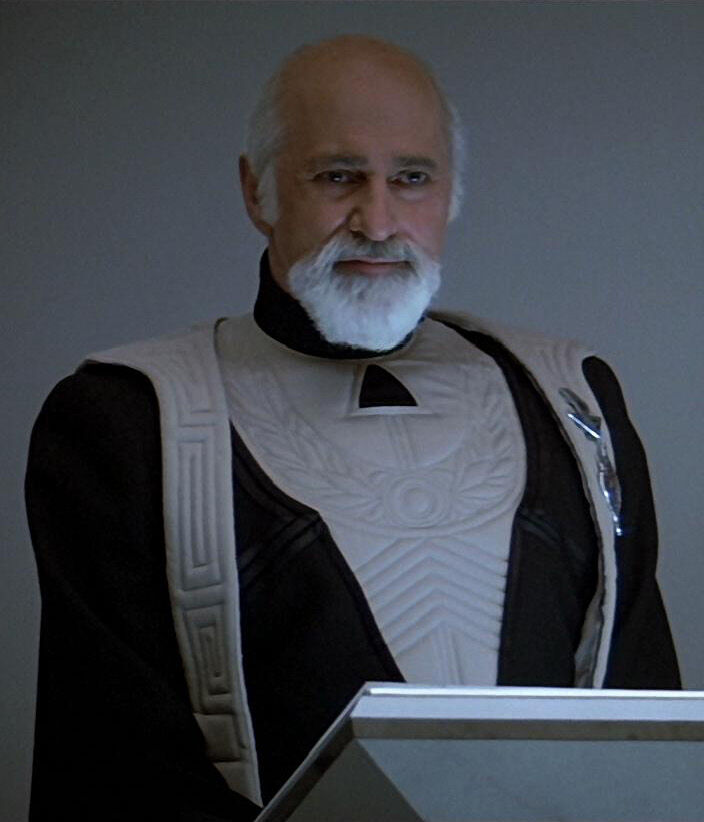
By the 23rd and 24th century many colonies populated by Humans existed; some of them were actual "Earth colonies" while others were jointly-established "Federation colonies". (TOS: "The Cage", "Day of the Dove"; TNG: "Legacy"; DS9: "Nor the Battle to the Strong")
Earth and its Human population itself were threatened several times with death and devastation after the Federation founding. The artificial lifeform known as V'ger threatened to destroy all life on Earth in the 2270s, but was ultimately convinced to withdraw. (Star Trek: The Motion Picture). In 2286, a mysterious probe did significant damage to Earth by vaporizing the oceans and ionizing the atmosphere, causing the transmission of a planetary distress signal; however, indirect communications with the probe were established via humpback whales and it withdrew. (Star Trek IV: The Voyage Home)

Earth was threatened with assimilation into the Borg Collective twice in 2367 and 2373, but both Borg cubes involved were destroyed by Starfleet. (TNG: "The Best of Both Worlds"; Star Trek: First Contact) In 2375, towards the end of the Dominion War, the Breen Confederacy, which had just joined the Dominion, destroyed much of Starfleet Headquarters' offices in San Francisco. Starfleet managed to destroy most of the Breen attack force. (DS9: "The Changing Face of Evil") In 2379, the Romulan praetor Shinzon planned to use a thalaron generator to wipe out Earth's population and start a war against the Federation. Shinzon was subsequently killed in the Battle in the Bassen Rift. (Star Trek Nemesis)
Despite such planetary threats, by the 24th century most Humans considered that they had turned their home planet into a paradise. (DS9: "Homefront", "What You Leave Behind")
Earth remained the seat of the Federation's government and Starfleet Command until the 31st century. The Burn caused both institutions to relocate from Earth; the planet subsequently left the Federation and was again governed by United Earth, which made the planet self-sufficient. Despite this, Humans continued to serve in Starfleet by the late 32nd century. (DIS: "People of Earth", "Die Trying")
Humans still existed by the 33rd century. (ST: "Calypso")
In "Cold Front", Daniels from the 31st century stated that he was Human, "more or less". It was not stated whether this ambiguity resulted from non-Human ancestors or a future evolution of the Human race.
Pre-warp alien contacts
Although official First Contact came with the Vulcans landing on Earth in 2063, several earlier encounters between Humans and other intelligent lifeforms took place prior to this date. Those contacts generally involved smaller groups of Humans and did not become public knowledge until centuries or even millennia later:
- Extraterrestrial visitors, known as the "Sky Spirits", visited with and genetically altered a group of people on Earth who would later be known as the indigenous inhabitants of the Americas. This took place about 45,000 years ago. (VOY: "Tattoo")
- As early as 4000 BC, a species of aliens took Humans to raise on a planet at least a thousand light years from Earth. Their descendants were later used as agents on Earth to promote the alien policy that Humanity should survive its own self-destructive tendencies. (TOS: "Assignment: Earth")
- The being known as Kukulkan visited the Earth and helped advance the Egyptian, Mayan, Aztec, and Chinese civilizations. Kukulkan gave those civilizations new art and agricultural techniques. (TAS: "How Sharper Than a Serpent's Tooth")
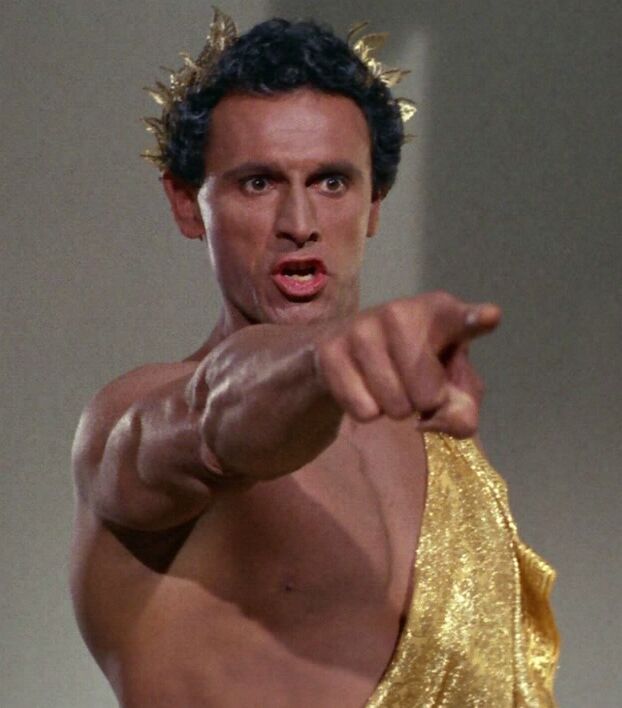
- The ancient Greeks were visited by aliens who, for all intents and purposes, were viewed as gods by the Humans. The aliens enjoyed this treatment for awhile, until their adoration waned and they moved on. These aliens were the basis for classical Greek gods and goddesses. (TOS: "Who Mourns for Adonais?")
- Around 400 BC, a group of refugees from the planet Sahndara settled on Earth and learned of the teachings of Plato. Some time afterward, they left Earth and began their own civilization as the Platonians. (TOS: "Plato's Stepchildren")
- In 1647, the anaphasic entity known as Ronin visited Glasgow, Scotland to find a host with a suitable biochemistry, Jessel Howard. (TNG: "Sub Rosa")
- The Q later known as Quinn visited Earth at least three times. In 1666, he assisted Isaac Newton in discovering gravity. In 1864, he saved Colonel Thaddius Riker in the American Civil War. In 1969, he assisted Maury Ginsberg in arriving at the Woodstock concert. (VOY: "Death Wish")
- In the 19th century, Redjac, a non-corporeal cloud entity who fed on the pain and fear he caused by committing murders, arrived on Earth and murdered several women as Jack the Ripper. In 1932, Redjac was responsible for the death of seven women in Shanghai, China. In 1974, he murdered Five women in the city of Kiev, USSR. (TOS: "Wolf in the Fold")
- A group of aliens known as the Megans interacted with the population of Salem, Massachusetts in the 17th century. Their involvement eventually led to the Salem witch trials. Their influence may have also led to a number of other influences on Earth mythology and beliefs. (TAS: "The Magicks of Megas-Tu")
- In the 18th century, a group called the Preservers, visited Earth and subsequently transplanted a group of American Indians, including people from the Delaware, Navajo, and Mohican tribes, to another planet. This was presumed to have been done to "preserve" their dying culture. (TOS: "The Paradise Syndrome")
- The non-corporeal being, Onaya, was present on Earth at least twice: once during the 1st century BC where she stimulated the mind of Catullus; and again circa 1821, where she affected John Keats before departing. (DS9: "The Muse")
- The El-Aurian known as Guinan visited the Earth during the late 19th century, around 1893. She became well known in San Francisco, however her identity as a non-Human remained unknown. (TNG: "Time's Arrow")
- Alien abductions of Humans took place in the 19th and 20th century. The former was done by the Skagarans, who took several thousand Humans to work as slaves on a Skagaran colony. The latter was done by the Briori in 1937, who took three hundred Humans from Earth also to be used as slaves. In both instances the Humans revolted and overcame or drove away their kidnappers. (VOY: "The 37's"; ENT: "North Star")
- In 1947, three Ferengi accidentally time-traveled from the year 2372 in what became known as the Roswell Incident. (DS9: "Little Green Men")
- In 1957, three Vulcans survived a crash landing in Carbon Creek on the North American continent. They had to live among the Humans until a rescue ship finally arrived. Before leaving Earth, however, the Vulcan T'Mir traveled to a large city and sold an "invention" to a businessman: Velcro. One of the Vulcans, Mestral, decided to stay behind on Earth. (ENT: "Carbon Creek")
- In 2037, an unnamed alien lifeform brought colonel Stephen G. Richey, the sole survivor of the NASA shuttle Charybdis to a planet in the Theta 116 system after accidentally introducing a contaminant abroad the shuttle. (TNG: "Royale")
Timeline
- 100,000 years ago: The first Human tribal societies had formed by this time.
- 28,000 years ago: Another Human species, the Neanderthals become extinct after having co-existed with modern Humans.
- 4th & 3rd millennia BC: By this time, the first Human civilizations had arisen, e.g., in Mesopotamia, which includes the kingdom of Uruk, as well as in Greece and Egypt, where the Pyramids of Giza are constructed.
- 4th and 5th centuries BC: Greek philosophers such as Socrates and Plato greatly contribute to Human culture. In 480 BC, Greek-Spartan king Leonidas fights the Persians at the Battle of Thermopylae.
- 3rd century BC: The Great Wall is constructed under the first Qin emperor of China.
- 1st century BC to 5th century: The Roman Empire rises to power around the Mediterranean under Julius Caesar and Augustus Caesar. Later, the Empire helps to spread Christianity and eventually falls, which includes the sacking of Rome by the Visigoths during Flavius Honorius' rule.
- 11th to 13th century: A series of crusades takes place in the name of Christianity.
- 14th to 17th century: Half of Europe is killed by the bubonic plague in 1334. In 1478, the Spanish Inquisition is founded. Meanwhile, the Renaissance takes hold, producing scholars and artists like Petrarch, Leonardo da Vinci, as well as Nicolaus Copernicus, and paves the way for the achievements of Johannes Kepler, William Shakespeare, Galileo Galilei, and Isaac Newton.
Appendices
Background information
In an unused line of dialogue from the final draft script of TOS: "Charlie X", Doctor Leonard McCoy commented, "Earth history is full of cases where a small child managed to survive in a wilderness."
Apocrypha
According to Gene Roddenberry's novelization of Star Trek: The Motion Picture, the Mediterranean region and north Africa had remained an island of Human progress and tranquility during the savagery which had racked much of the rest of the world during the 21st century, partly due to the drastic alterations made to the old sea's character and the region surrounding it – the fabled Mediterranean Sea was now hardly more than a long, slender lake which trailed off into the hazy blue distance in the direction from which it had just come. Human ingenuity had turned the region into a virtual garden, skillfully engineered climate alterations having profoundly improved the climate and character of the entire northern half of Africa. Population growth in the region had been compensated with underground city construction – similar habitation centers were constructed throughout the world in the later half of the century.